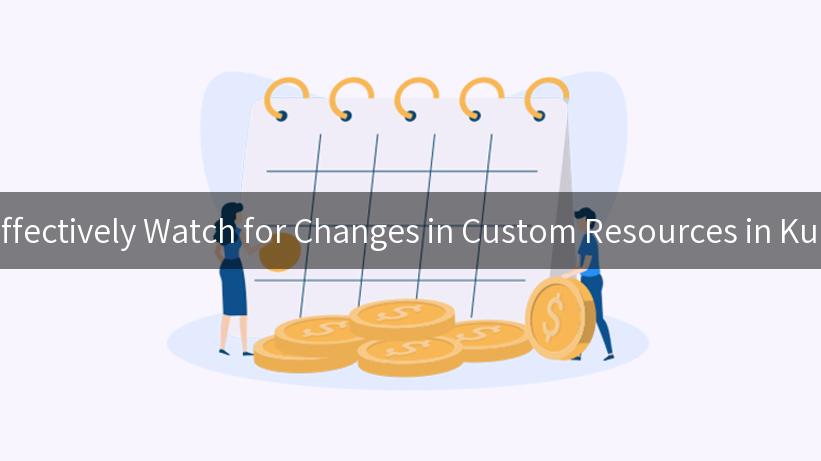
Kubernetes has revolutionized the world of container orchestration. Among its myriad features, one of the most powerful is the ability to watch for changes in custom resources. This capability enables developers and operators to respond promptly to any modifications, ensuring enhanced reliability and performance in application management. In this article, we will dive into how to effectively watch for changes in custom resources, especially focusing on the integration with API calls, using the powerful solutions like Traefik and the Open Platform.
Understanding Custom Resources in Kubernetes
Custom resources are extensions of Kubernetes API. They help users define new types of resources that can be managed via the Kubernetes API just like native resources (like Pods and Services). Custom resources are often used in conjunction with Custom Resource Definitions (CRDs) to enable seamless management of their lifecycle.
The ability to watch for changes in these custom resources is essential, especially in dynamic environments. This allows for reactive programming patterns where your application can perform actions based on the state of custom resources.
Importance of Watching for Changes in Custom Resources
Watching for changes in custom resources provides several advantages:
- Real-time Monitoring: You can monitor changes in real time, making it easier to respond to events as they happen.
- Improved Resource Management: Helps automate the management of resources based on their status changes, thus improving operational efficiency.
- Enhanced Automation: Enables you to trigger workflows or processes in response to changes, which is crucial for continuous integration/continuous deployment (CI/CD) scenarios.
- Integration with Other Services: For instance, using API calls can facilitate interaction with various services like Traefik, allowing for a more cohesive ecosystem.
Using Kubernetes Client Libraries to Watch for Changes
To watch for changes in custom resources effectively, you can use Kubernetes client libraries. These libraries help interact with the Kubernetes API in a language-agnostic way.
Example using Go Client
Below is a simple example demonstrating how to use the Go client library to watch for changes in a custom resource:
package main
import (
"context"
"fmt"
"time"
metav1 "k8s.io/apimachinery/pkg/apis/meta/v1"
"k8s.io/client-go/kubernetes"
"k8s.io/client-go/tools/clientcmd"
"k8s.io/apimachinery/pkg/watch"
)
func main() {
kubeconfig := "path/to/your/kubeconfig"
config, _ := clientcmd.BuildConfigFromFlags("", kubeconfig)
clientset, _ := kubernetes.NewForConfig(config)
watcher, _ := clientset.CustomResourceDefinitions().Watch(context.TODO(), metav1.ListOptions{})
fmt.Println("Watching for changes in Custom Resources...")
for event := range watcher.ResultChan() {
switch event.Type {
case watch.Added:
fmt.Println("Added:", event.Object)
case watch.Modified:
fmt.Println("Modified:", event.Object)
case watch.Deleted:
fmt.Println("Deleted:", event.Object)
}
}
}
Ensure to replace path/to/your/kubeconfig with your actual Kubernetes configuration path. This code snippet sets up a watch on custom resources and prints out changes as they occur.
Utilizing API Calls to Integrate Custom Resources
API calls form the backbone of Kubernetes operations, especially when it comes to managing resources and watching for changes. You can create an Open Platform that allows for orchestrated actions based on the state of custom resources.
Integrating with Traefik and APIs
Traefik is known for its exceptional capabilities as a reverse proxy and load balancer. When integrated with Kubernetes and custom resources, it allows you to route requests dynamically based on changes.
Example: Route Traffic Based on Custom Resource Changes
The following steps outline how to leverage API calls with Traefik when changes occur in custom resources:
- Define a Custom Resource: Use CRDs to define the custom resource you want to track.
- Monitor Changes: Utilize the example code provided above to monitor changes in the custom resource.
- Make API Calls: Whenever a change is detected, make an API call to Traefik to update the traffic routing rules.
Here’s a table showcasing the Invocation Relationship Topology when a change is triggered:
| Component |
Action |
Endpoint |
| Custom Resource |
Change Detected |
/api/custom-resources |
| API Call to Traefik |
Update Load Balancer Rules |
/api/routes |
| Traefik |
Route Traffic |
/api/status |
This table outlines how different components interact and the sequence of actions when a custom resource changes.
API Call Example
Here’s an example of making an API call to update Traefik when a change occurs:
curl --location --request POST 'http://traefik.host/api/routes' \
--header 'Content-Type: application/json' \
--data '{
"rules": ["Host(`myapp.local`)"],
"services": [{"name": "my-service", "port": 80}]
}'
Make sure to replace traefik.host and other placeholders with your actual service details.
Best Practices for Watching Custom Resources
To effectively monitor and manage changes in custom resources, you should follow some best practices:
- Set Up Proper RBAC: Ensure Role-Based Access Control is properly configured to allow only the necessary permissions for watching resources.
- Handle Watch Events Efficiently: Design your application to handle watch events in a non-blocking manner to avoid slowdowns in your service.
- Implement Backoff Strategies: If your watcher loses connection, implement exponential backoff strategies to reconnect without overwhelming the API server.
- Leverage Existing Libraries: Make use of existing Kubernetes client libraries to simplify interaction with the Kubernetes API.
- Optimize API Calls: Reduce the frequency of API calls by batching updates or using Kubernetes events effectively.
APIPark is a high-performance AI gateway that allows you to securely access the most comprehensive LLM APIs globally on the APIPark platform, including OpenAI, Anthropic, Mistral, Llama2, Google Gemini, and more.Try APIPark now! 👇👇👇
Conclusion
Watching for changes in custom resources in Kubernetes offers a powerful way to enhance the automation and responsiveness of your applications. By effectively utilizing API calls and integrating tools like Traefik, you can build a robust Open Platform that facilitates seamless management of resources. By following the outlined practices and leveraging the tools at your disposal, you can ensure that your Kubernetes environment remains efficient, dynamic, and responsive to the demands of modern applications.